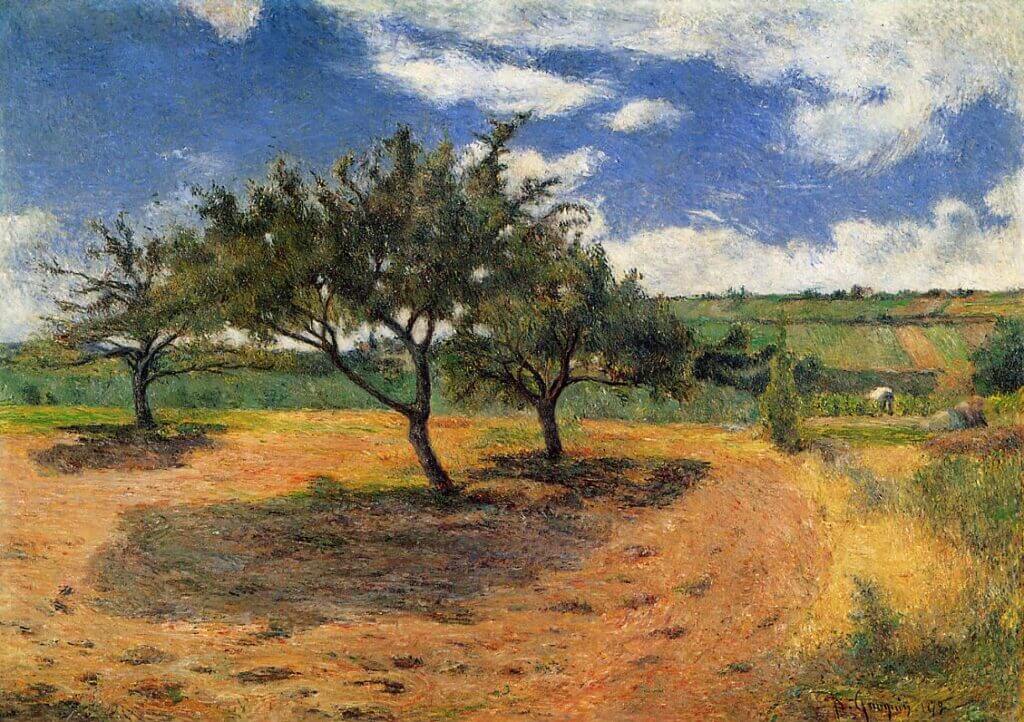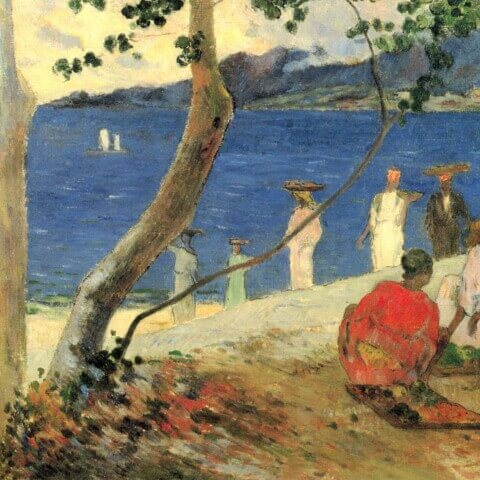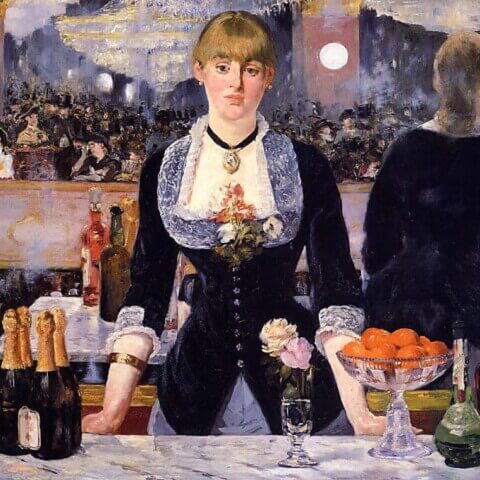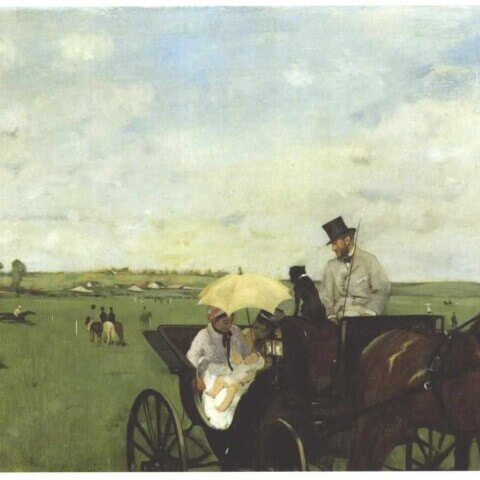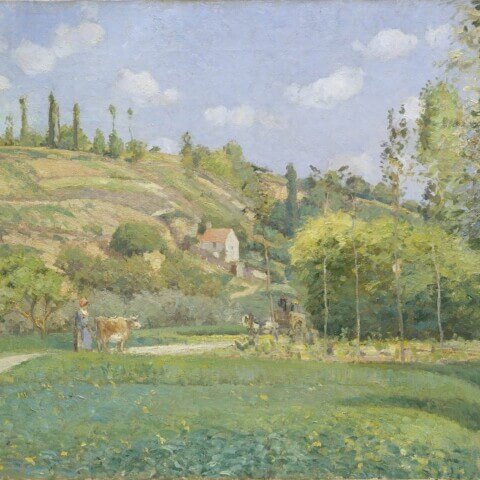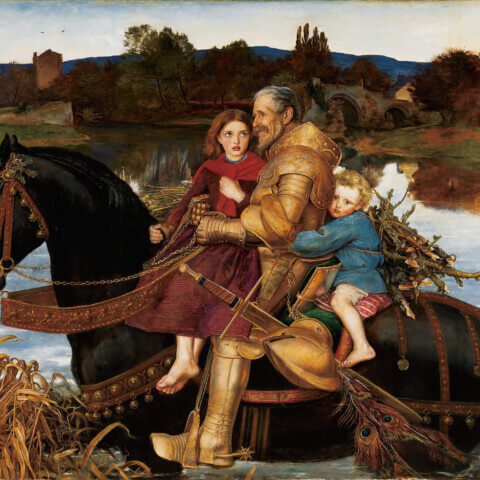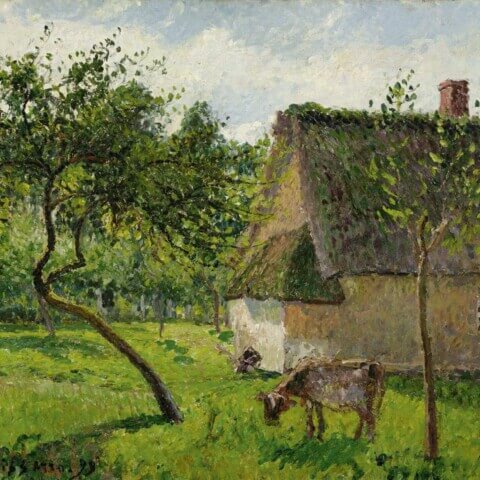Title: “”Gauguin’s Apple Trees at l’Hermitage: A Vision of Artistic Transition””
Year Painted: 1879
In 1879, the renowned artist Paul Gauguin created a remarkable painting titled “”Apple Trees at l’Hermitage.”” This artwork holds a significant place in art history, not only for its exquisite beauty but also for its representation of Gauguin’s artistic transition.
Gauguin’s “”Apple Trees at l’Hermitage”” showcases his departure from traditional realism, marking the beginning of his exploration into a more subjective and expressive style. The painting depicts a serene landscape filled with vibrant apple trees, bathed in warm hues and characterized by bold, simplified forms. Gauguin’s use of intense colors and flattened perspective adds a sense of depth and visual impact to the scene.
The year 1879 is a pivotal moment in Gauguin’s career. It was during this period that he began to question the limitations of Impressionism and sought new ways to convey his emotions and ideas through art. “”Apple Trees at l’Hermitage”” reflects his growing fascination with the beauty of nature and his desire to capture its essence on canvas.
What makes this painting particularly special is its symbolic significance. Beyond its visual appeal, “”Apple Trees at l’Hermitage”” foreshadows the innovative works that would come to define Gauguin’s later career. This painting represents the artist’s transition towards a more profound exploration of color, form, and subject matter.
Gauguin’s departure from realism and his embrace of a more subjective approach paved the way for the development of Symbolism and later influenced the rise of Post-Impressionism. His bold use of color and simplified forms in “”Apple Trees at l’Hermitage”” laid the groundwork for his iconic masterpieces like “”The Yellow Christ”” and “”Vision After the Sermon.””
Furthermore, this painting also reflects Gauguin’s personal journey. At the time of creating “”Apple Trees at l’Hermitage,”” Gauguin was going through a period of self-reflection and seeking solace in nature. The tranquil landscape and vibrant colors in the painting mirror his quest for inner peace and a connection to the spiritual realm.
In conclusion, Gauguin’s “”Apple Trees at l’Hermitage”” is a visually captivating artwork that encapsulates the artist’s transition from realism to a more expressive and subjective style. Its significance lies not only in its artistic merit but also in its influence on the trajectory of modern art. This painting serves as a pivotal moment in Gauguin’s career, setting the stage for his groundbreaking contributions to the art world.
At our art gallery, we take pride in offering comprehensive global shipping to our esteemed clientele. We understand the significance of your art acquisitions and the need to transport them with utmost care. Hence, we are committed to delivering your chosen paintings to any address worldwide and free of any additional charge.
Our reliable courier service partners are experienced in handling precious art pieces and ensure that your painting reaches you in pristine condition. We offer fully insured, door-to-door delivery, providing you with peace of mind that your artwork is protected during transit.
Moreover, to accommodate your unique framing preferences, we offer the distinctive service of sending your purchased artwork directly to any framer across the globe. This enables you to have your painting framed locally by your trusted framer, reducing the risk of damage during transportation.
Regardless of your location or your framer’s, we strive to make the process as seamless as possible. It is our goal to provide exceptional service that caters to your needs and ensures the safe delivery of your valuable artwork.
We invite you to experience our hassle-free, worldwide shipping service, which is aimed at delivering your prized art pieces safely and efficiently, wherever you may be.
Similar paintings
Join our newsletter
Signup for our newsletter and receive our inspiration guide and 20% discount on your first order!

